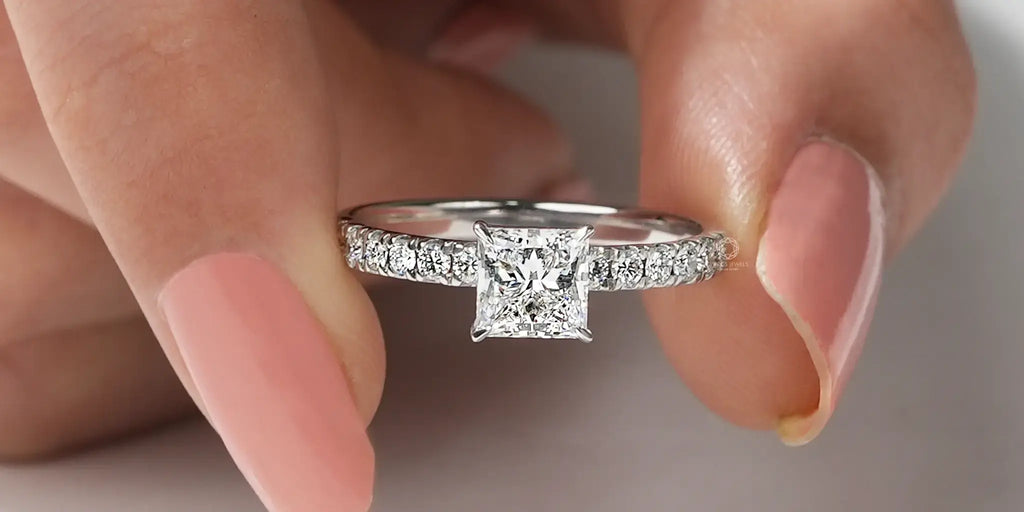
Throughout history, engagement rings have played a significant role in symbolizing commitment and love, particularly within the context of royal marriages. In French royal marriages, the engagement ring served not only as a personal token of affection but also as a powerful symbol of political alliances and familial ties. These exquisite pieces of jewelry often featured remarkable craftsmanship and were imbued with meaning, reflecting the values and traditions of the time. As we explore the role of engagement rings in French royal marriages, we uncover how these rings were far more than mere adornments; they were potent symbols of duty, legacy, and love.
In the realm of French royalty, engagement rings were often lavishly designed, featuring precious gems and intricate settings that spoke to the wealth and power of the families involved. For instance, the engagement ring of Marie Antoinette, made of diamonds and other luxurious stones, was emblematic of her royal status and the expectations that came with it. Such rings were not only intended to showcase the beauty and wealth of the bride but also to signify the strategic importance of the marriage itself. Marriages among royals were often arranged to strengthen political alliances, consolidate power, or secure peace between rival families. The engagement ring thus became a symbol of these important unions, serving as a tangible reminder of the commitments made by both parties.
The significance of engagement rings in French royal marriages can also be seen in the traditions surrounding their presentation. In many cases, the engagement ring was given during a formal betrothal ceremony, where the families would come together to solidify the union. This act was often accompanied by grand celebrations that reflected the grandeur of the royal lifestyle. The presentation of the ring served as a public declaration of intent, marking the couple’s commitment to each other in front of their families and courtiers. This ritual not only reinforced the personal bond between the couple but also affirmed the political implications of their union, as families would often use the occasion to display their wealth and influence.
The choice of gemstones and the design of the engagement ring were also steeped in symbolism. Diamonds, for example, were often chosen for their rarity and brilliance, representing eternal love and commitment. Other gemstones might hold specific meanings or associations, further enhancing the narrative of the marriage. For instance, sapphires were believed to bring wisdom and fidelity, while emeralds symbolized rebirth and hope. By selecting specific stones, royal families could communicate their values and aspirations for the union, using the engagement ring as a means of storytelling.
As the centuries progressed, the role of engagement rings in French royal marriages evolved, reflecting changes in societal norms and values. The French Revolution, for instance, brought about a shift in how royalty was perceived, and engagement rings began to represent not just political alliances but also the personal choices of individuals. The romantic ideals of love and passion began to take precedence, and engagement rings were increasingly seen as tokens of affection rather than merely symbols of duty. This transition marked a significant moment in the history of engagement rings, paving the way for modern concepts of love and commitment.
In contemporary times, the legacy of French royal engagement rings continues to influence how engagement rings are perceived and designed. The fascination with royal history and the allure of the opulent designs worn by figures such as Marie Antoinette and Empress Josephine have inspired countless couples in their quest for the perfect engagement ring. Many jewelers draw inspiration from historical designs, creating modern interpretations that reflect the elegance and grandeur associated with French royalty. The enduring appeal of these rings speaks to the lasting impact of royal traditions on contemporary culture.
In conclusion, engagement rings have played a multifaceted role in French royal marriages, serving as symbols of love, commitment, and political alliances. These exquisite pieces of jewelry transcended mere adornment; they were imbued with meaning and significance that reflected the values and traditions of the time. From their lavish designs to their symbolic gemstones, engagement rings in French royal marriages told stories of duty, legacy, and love that continue to resonate today. As couples seek to honor these traditions while embracing modern values, the legacy of engagement rings remains a powerful testament to the enduring nature of love and commitment throughout history.
